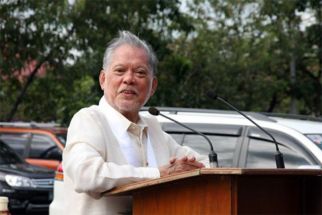Tobacco dust as organic molluscicide
MANILA, Philippines - Tobacco is not only a major ingredient in the manufacture of cigarettes, but also could be used for sustainable aquaculture that could increase farmers’ and fisherfolks’ income.
This was demonstrated by the National Tobacco Administration (NTA), in collaboration with other government agencies, during the launch of sustainable aquaculture practices using tobacco dust in La Union province last Jan. 13, 2012.
NTA administrator Edgardo D. Zaragoza led a “show and tell” activity at a demonstration farm in the municipality of Sto. Tomas, La Union, on how tobacco dust could address the degradation of fishponds due to the use of highly toxic chemicals.
Tobacco Dust Plus, the NTA chief said, is a duly tested, standardized, pure tobacco dust formulation intended as molluscicide to control snails and other predators in fishponds.
At the same time, tobacco dust can serve as a fertilizer to promote the growth of lablab (a natural fish food), and as soil conditioner.
Tobacco dust would replace the long-banned, highly toxic, cyanide-based, inorganic chemicals used in the preparation or sterilization of fishponds before the stocking of fingerlings, Zaragoza said.
“Tobacco dust is organic, readily degradable, and environment-friendly. The absence of pesticide residues contributes to the marketability and exportability of local fish and ensures consumer safety, aside from being free from chemical residues,” he added.
This has been proven in a series of studies conducted by the NTA in collaboration with Southeast Asian Fisheries Development Center, the Iloilo School of Fisheries in Iloilo, the DOST/Philippine Council for Aquaculture and Marine Resources Research and Development (PCAMRRD) and the BFAR, especially in Region III (Bulacan, Pampanga, Bataan) and Region I (Pangasinan and Ilocos Sur), he added.
The studies showed that by following recommended production technologies demonstrated in the farm, there was a marked decrease in the mortality rate of fingerlings from 20 percent to only five percent, resulting in savings of as much as P20,000 on production cost per hectare per grow-out cycle.
As a pioneering business venture, the production of tobacco dust also helps create new business opportunities, generates additional employment and creates more income for farmers, the NTA chief said.
It also increases benefits for tobacco growing areas, and may serve as a “safety net” for farmers negatively affected by the government’s anti-smoking campaign.
The techno-demonstration was held in coordination with La Union local government units led by Vice Gov. Aureo Q. Nisce, executive assistant Mario Eduardo C. Ortega representing the Office of Governor Manuel C. Ortega, and Sto. Tomas Mayor Marietta Carbonell.
The event was also attended by the BFAR- Region I director Nestor D. Domenden, and Don Mariano Marcos Memorial State University president Atty. Benjamin P. Sapitula.
“The project serves as a model of a unified, inter-agency collaboration to arrest the inter-related problems of continuing decline in productivity due to degradation of fishponds, non-marketability or exportability of fish due to high pesticide residue, and low income of fisherfolk due to the continuing use of farm chemicals,” Zaragoza said.
A Memorandum of Agreement was signed to firm up the collaboration.
- Latest





























